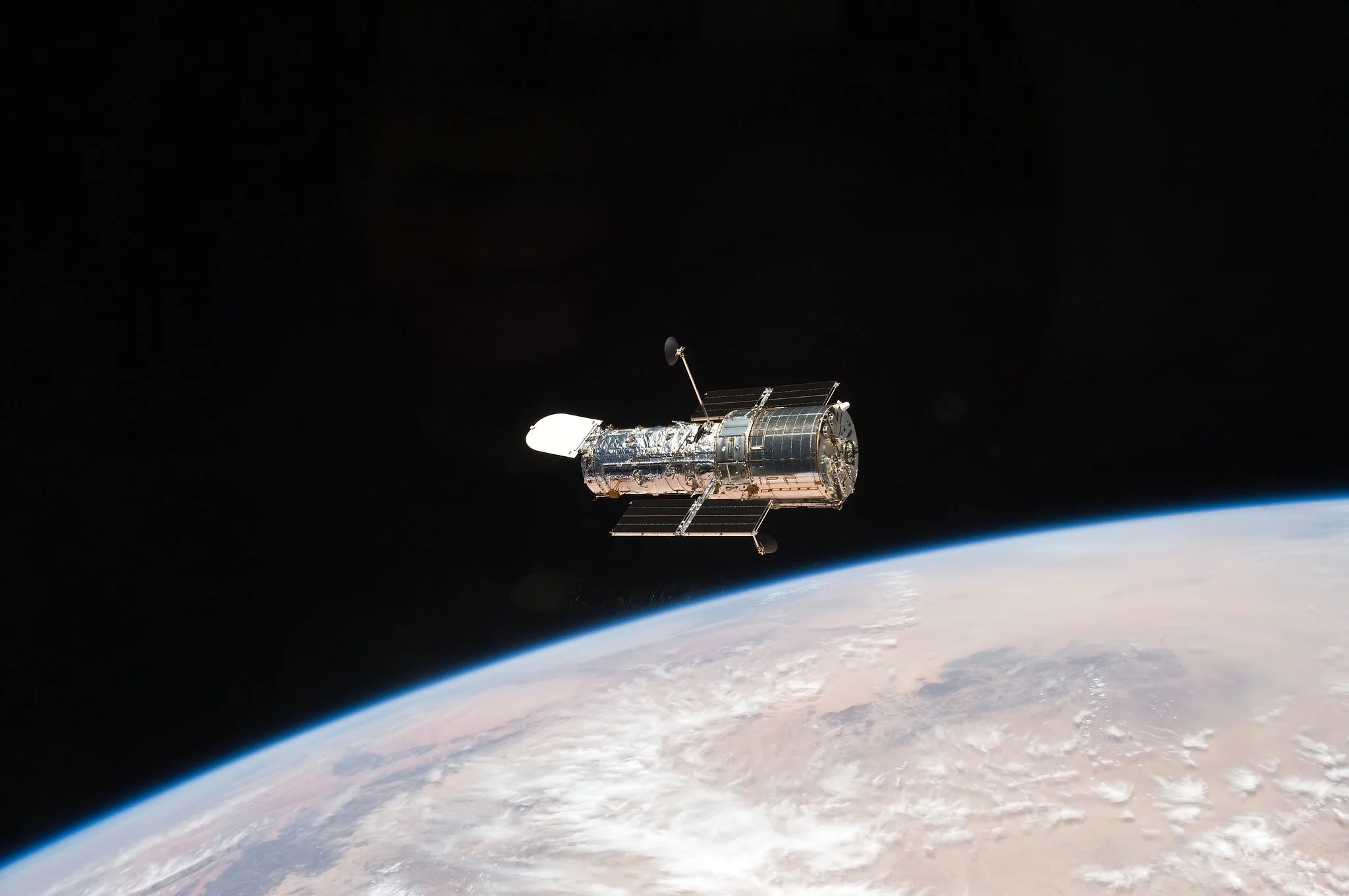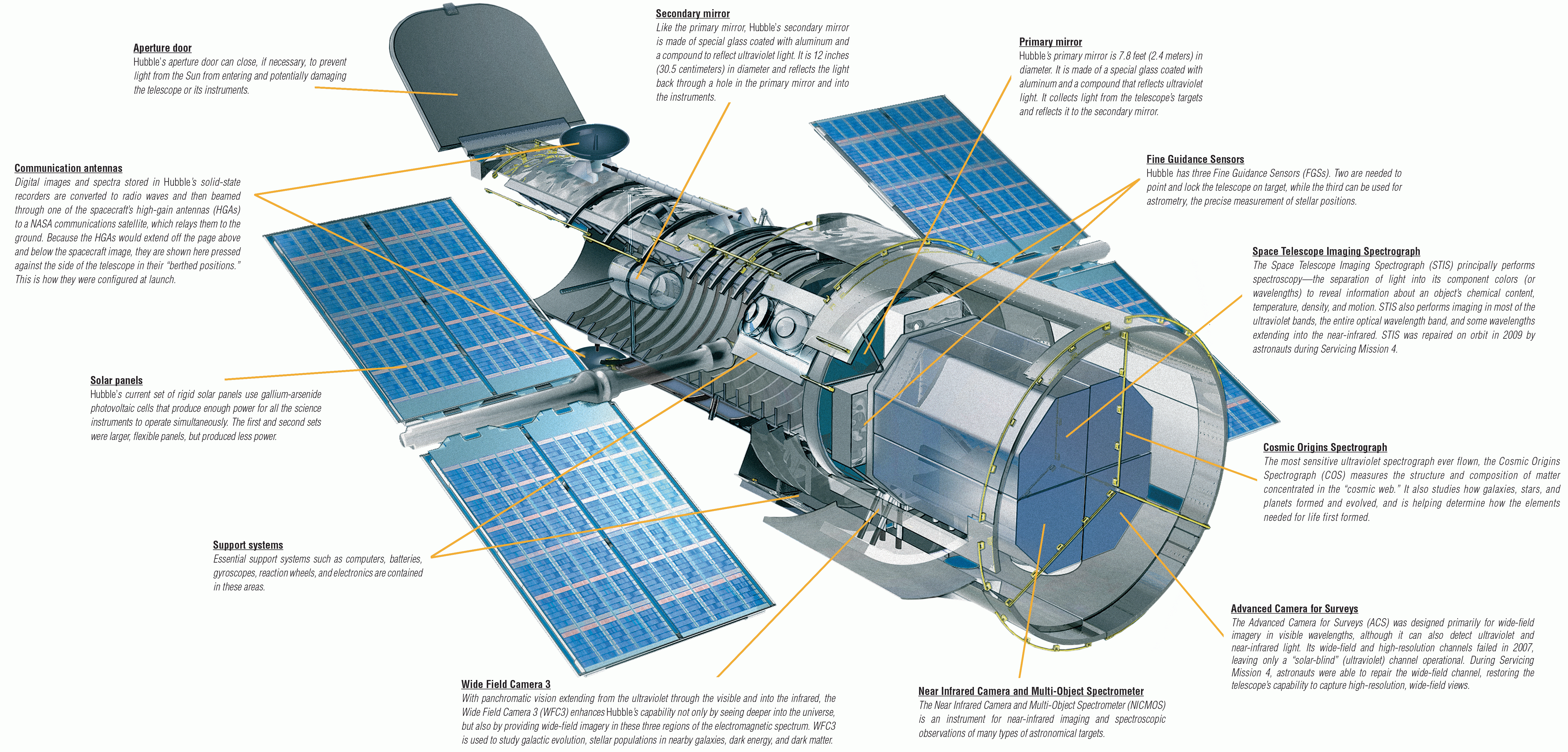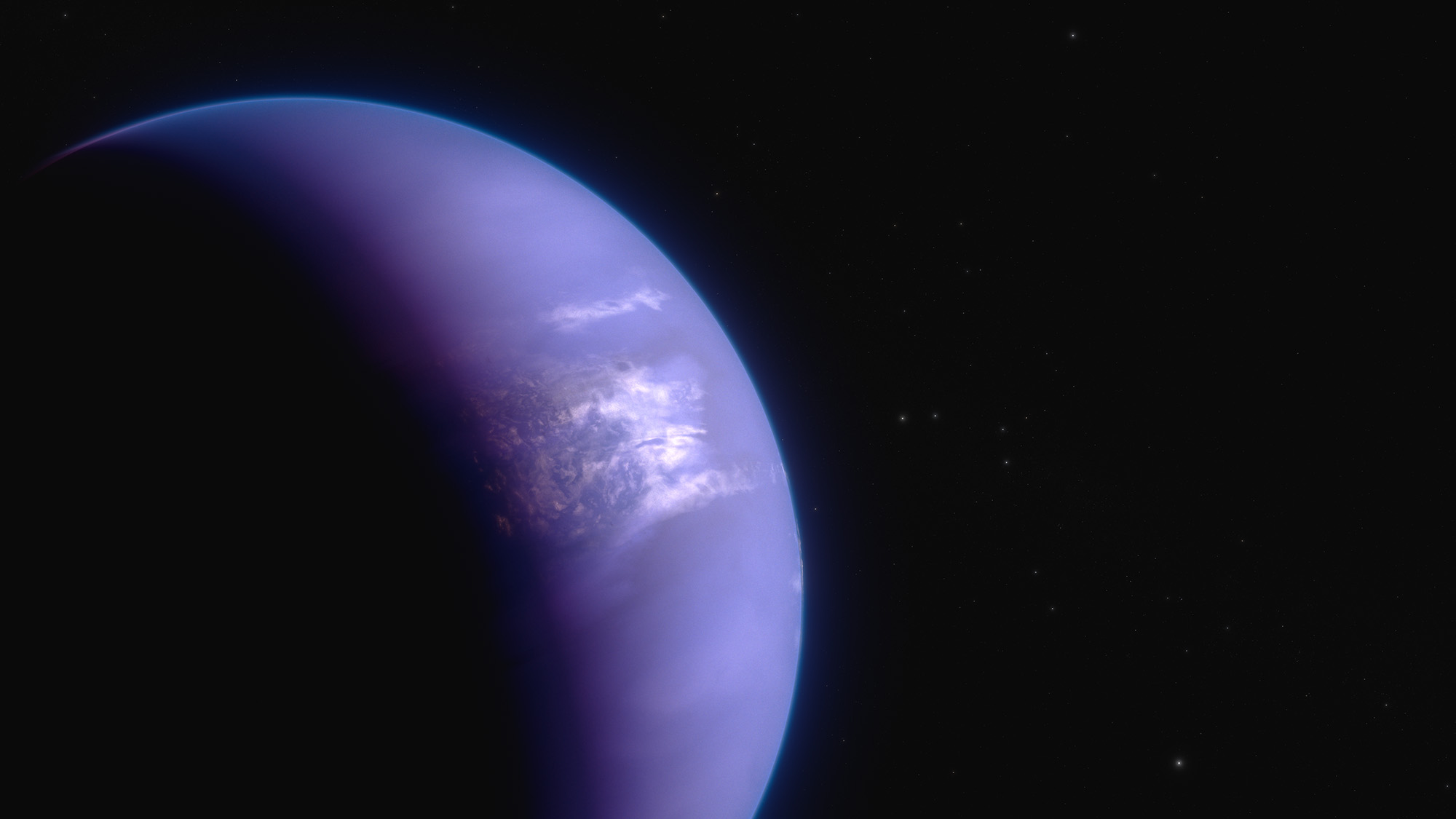These statistics reflect data as of 3/1/2024 unless otherwise indicated.
Length | 43 feet (13 m) |
Width | 14 feet (4.3 m) |
Weight | 27,000 pounds (12,200 kg) |
Turning speed | ~1 degree per minute |
Pointing accuracy | 0.007 arcseconds * |
* Equivalent to shining a laser beam on President Roosevelt’s head on a dime over 200 miles (320 km) away
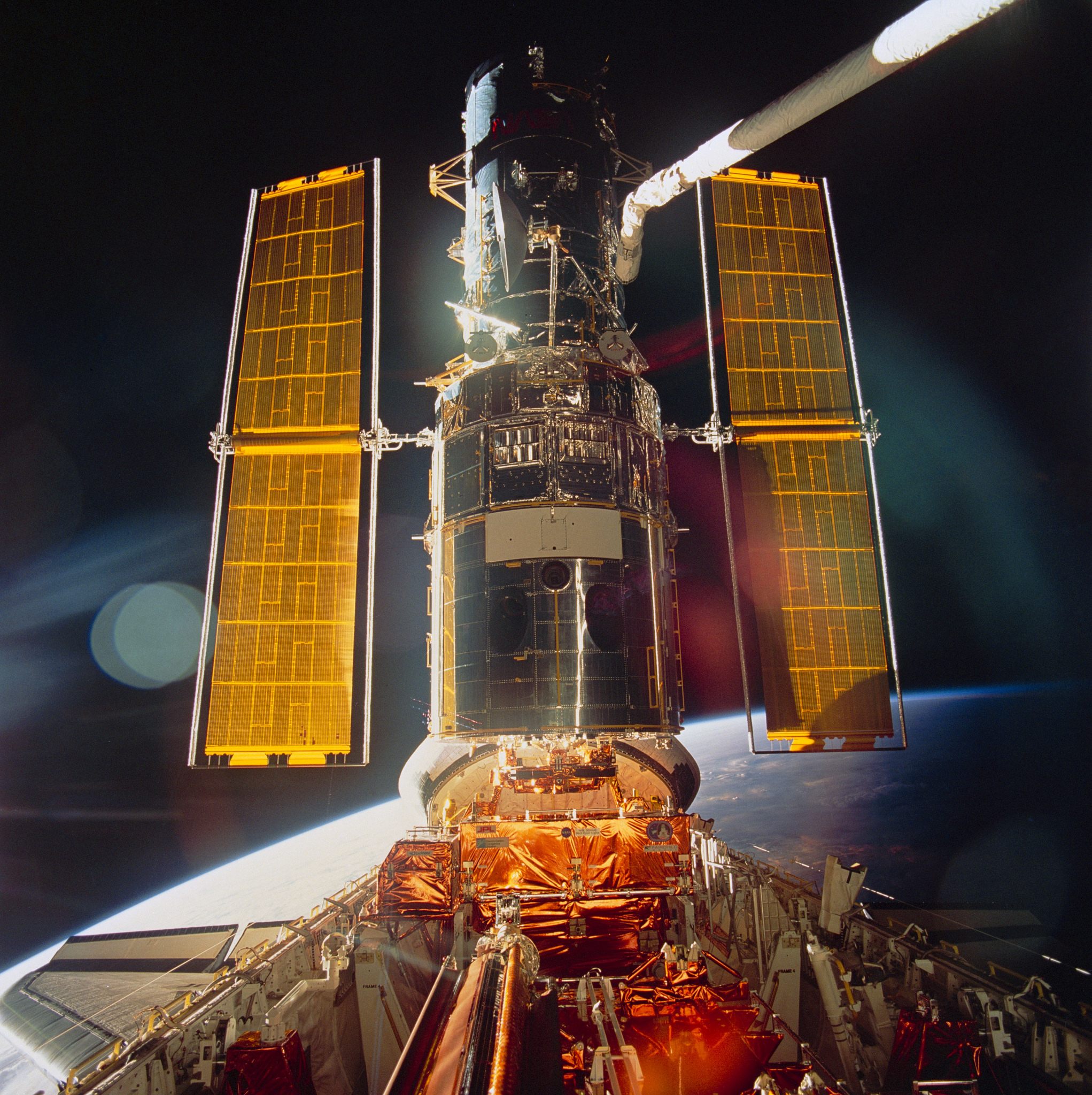
Sunlight reflects off of the Space Shuttle Endeavour's aft windows and the Hubble Space Telescope prior to its deployment near the end of the telescope’s first servicing mission. Hubble is the size of a large school bus and weighs 27,000 pounds (12,200 kg).
NASA
Hubble's altitude | 320 miles (515 km) |
Hubble's orbital speed | ~ 17,000 miles per hour (27,000 kilometers per hour) |
Distance traveled in orbit | > 5 billion miles (8 billion km) |
Earth orbits | > 184,000 |
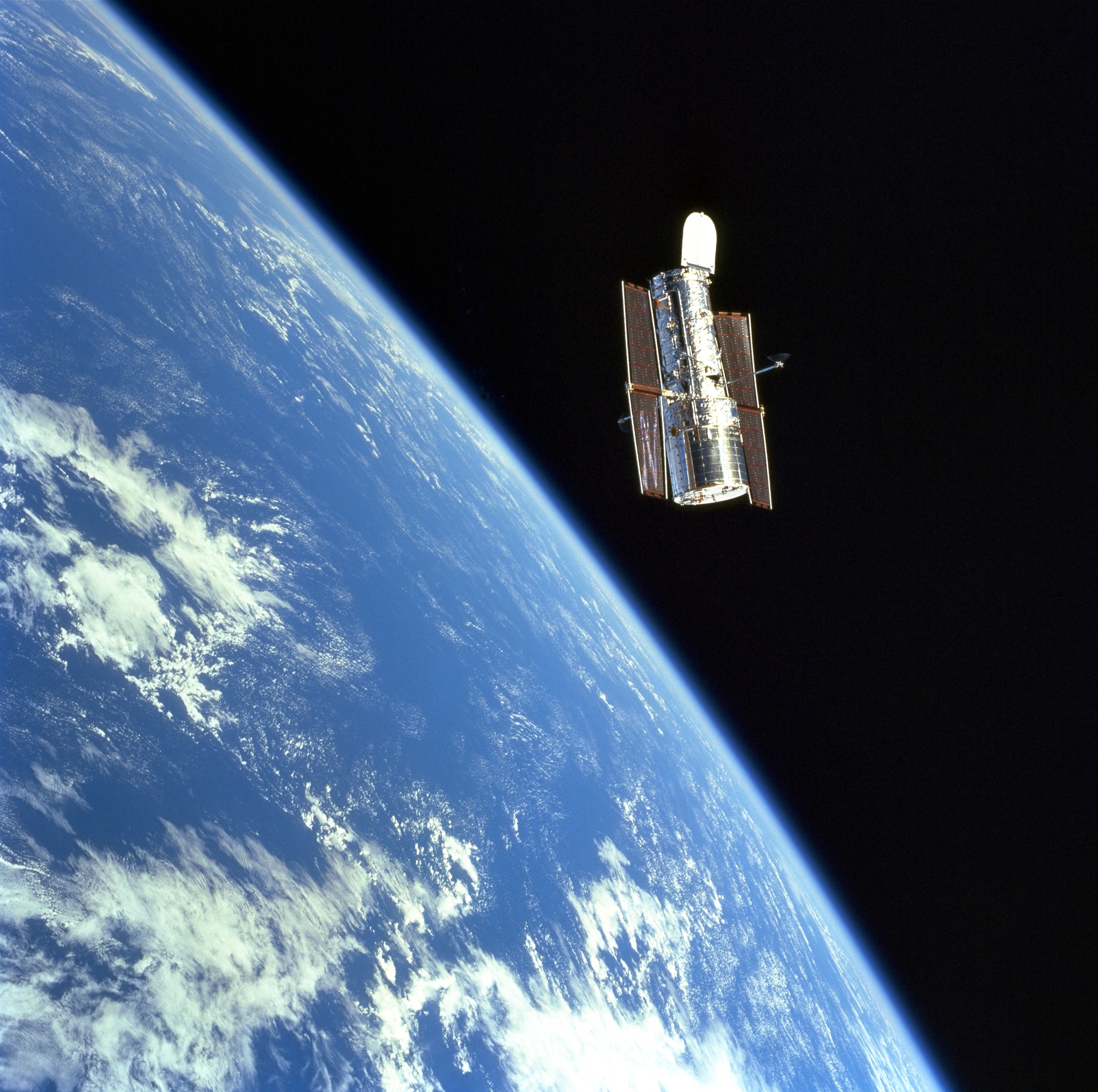
The Hubble Space Telescope is in low-Earth orbit, making one revolution around Earth every 95 minutes. Above Earth’s thin blue atmosphere, visible along the horizon in this 1999 image, Hubble gets a clearer and higher resolution view of the cosmos than ground-based observatories.
NASA
Power generated by Hubble solar arrays | > 5,200 watts |
Power typically used by the spacecraft components | ~ 2,100 watts |
Total capacity of Hubble's six batteries | > 500 amp hours |
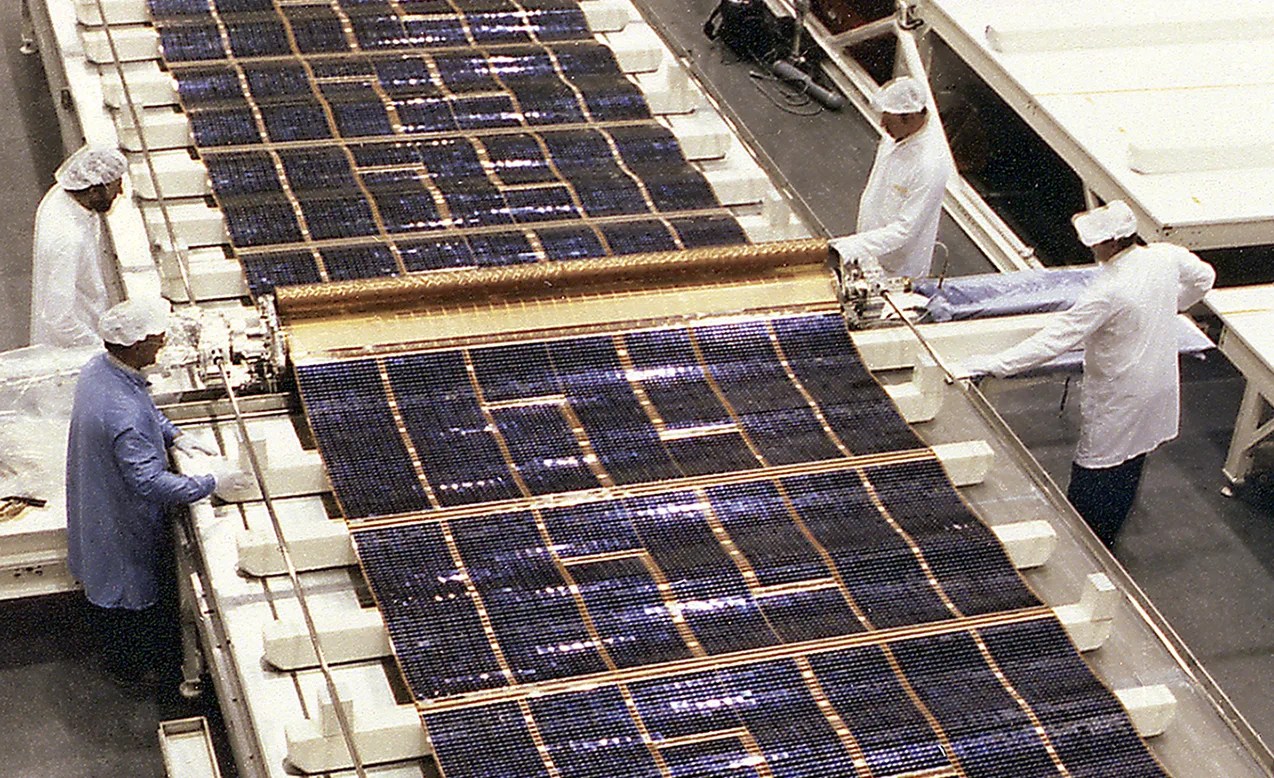
One of Hubble’s original solar arrays is shown here during a deployment test before its installation on the spacecraft. The solar arrays collect the Sun’s energy, generating power for all of Hubble’s systems.
NASA
Primary mirror diameter | 7.8 feet (2.4 m) |
Amount of light collected by the primary mirror compared to the human eye | 40,000 times |
Secondary mirror diameter | 1 foot (0.3 m) |
Focal length | 189 feet (56.7 m) compressed to 21 feet (6.4 m) |
Ultraviolet-visible light resolution/number of pixels | 0.04 arcseconds per pixel** /16 megapixels |
Infrared light resolution/number of pixels | 0.13 arcseconds per pixel /1 megapixels |
** Equivalent to seeing a pair of fireflies in Tokyo that are less than 10 feet (3 m) apart from Washington, D.C.
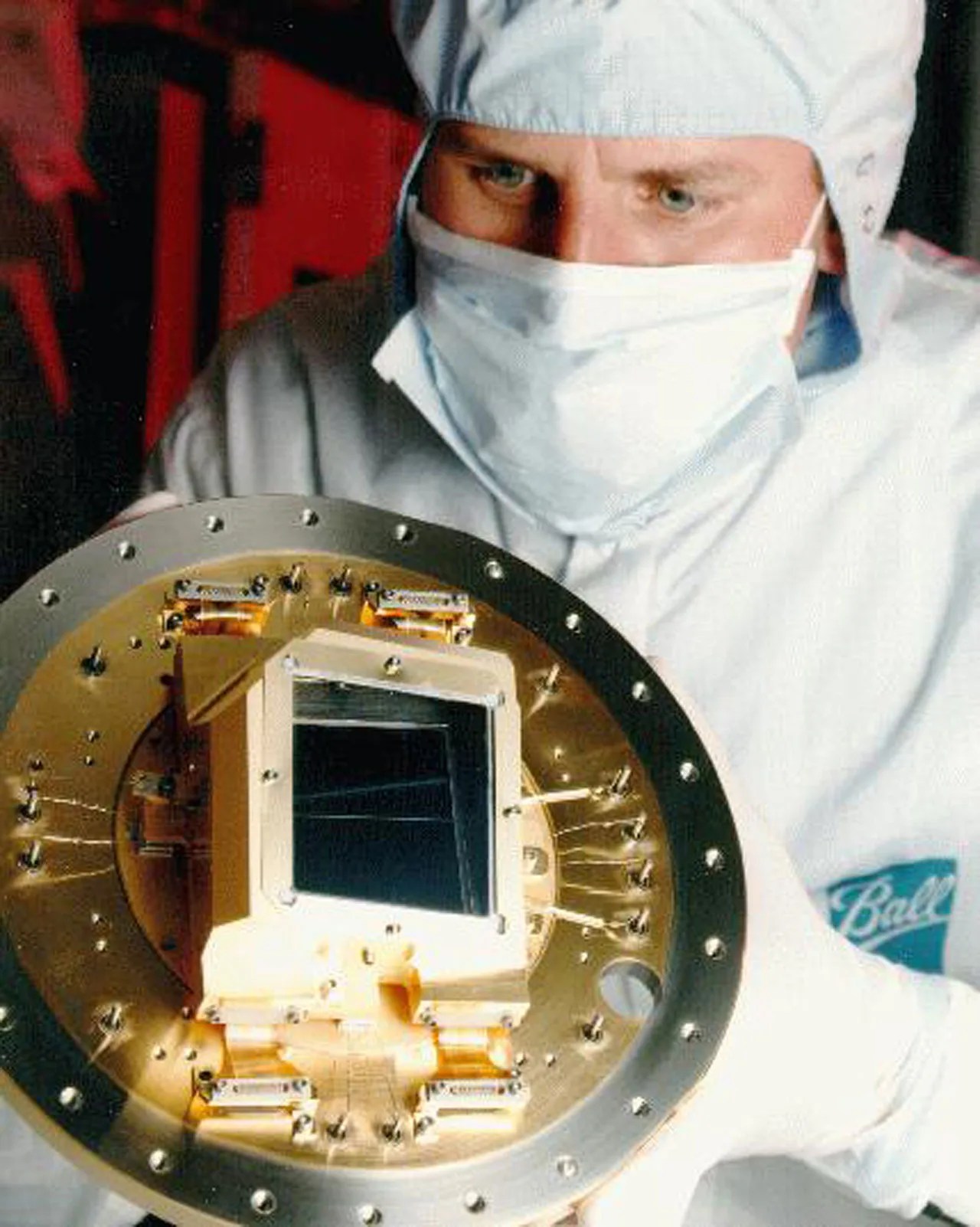
The Advanced Camera for Surveys contains a 16-megapixel detector (charged couple device) that provides high-resolution images in ultraviolet and visible light.
NASA
Rate at which science data is transmitted to the ground | 1 megabit per second |
Average amount of science data captured weekly | 150 gigabits |
Rate at which commands are sent to Hubble | 32 kilobits per second |
Amount of data that can be stored on the spacecraft | 24 gigabits (or about 3 gigabytes) |
Size of data archive | 430 terrabytes |
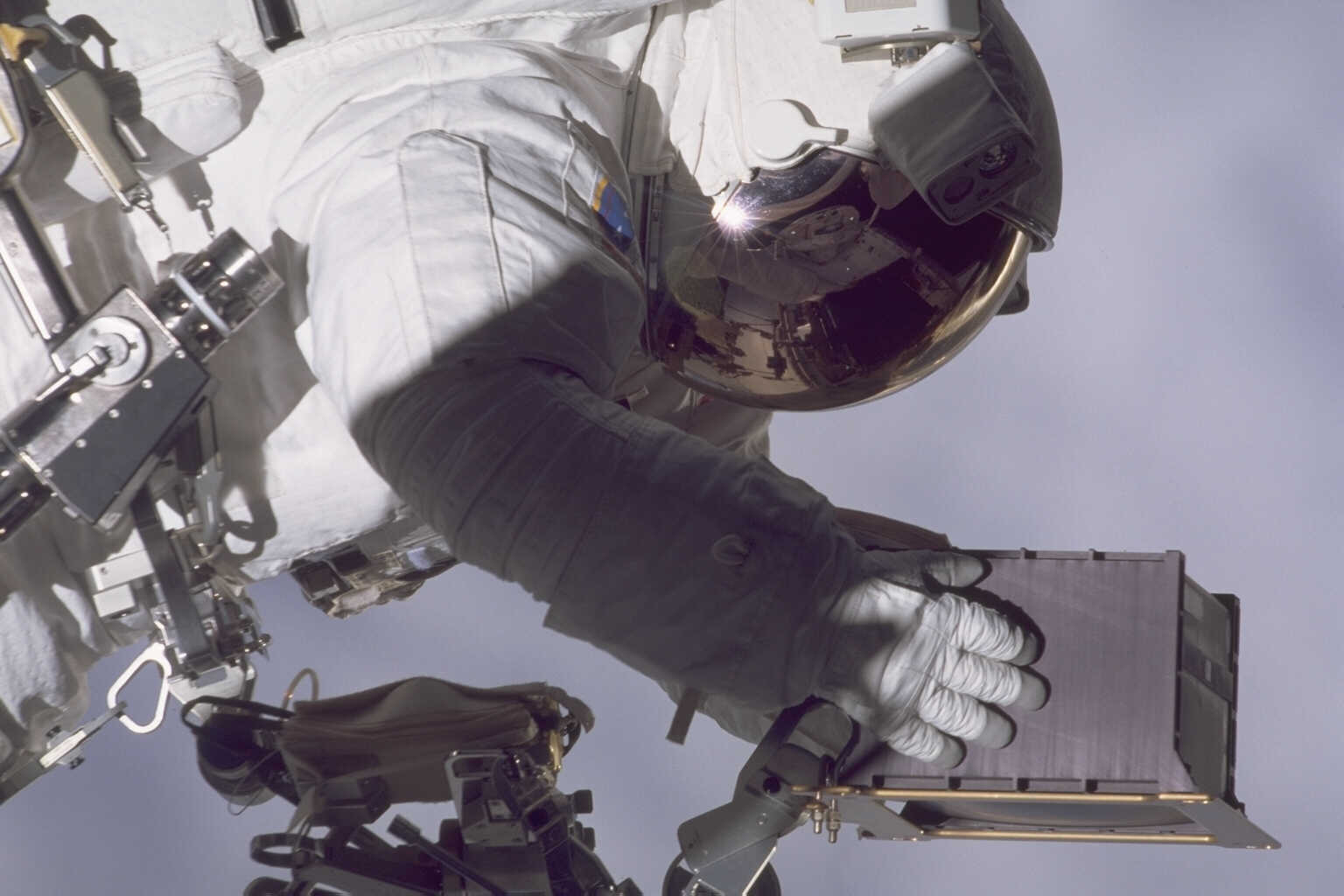
Astronaut John Grunsfeld maneuvers to install a solid state recorder (SSR) during Hubble Servicing Mission 3A in December 1999. The SSR is equivalent to a big USB stick made of computer memory. It holds 10 times the amount of data as the tape recorder it replaced.
NASA
Number of observations taken | over 1,600,000 |
Astonomical objects for which data has been collected | 108,000,000 |
Percentage of the sky observed | 0.1% |
Distance light traveled from the farthest object (galaxy GN-z11) observed | 13,400,000,000 light-years |
Distance light traveled from the farthest individual star (Earendel) Hubble observed | 12,900,000,000 light-years |
Longest exposure time for one pointing | 1,000,000,000 seconds |
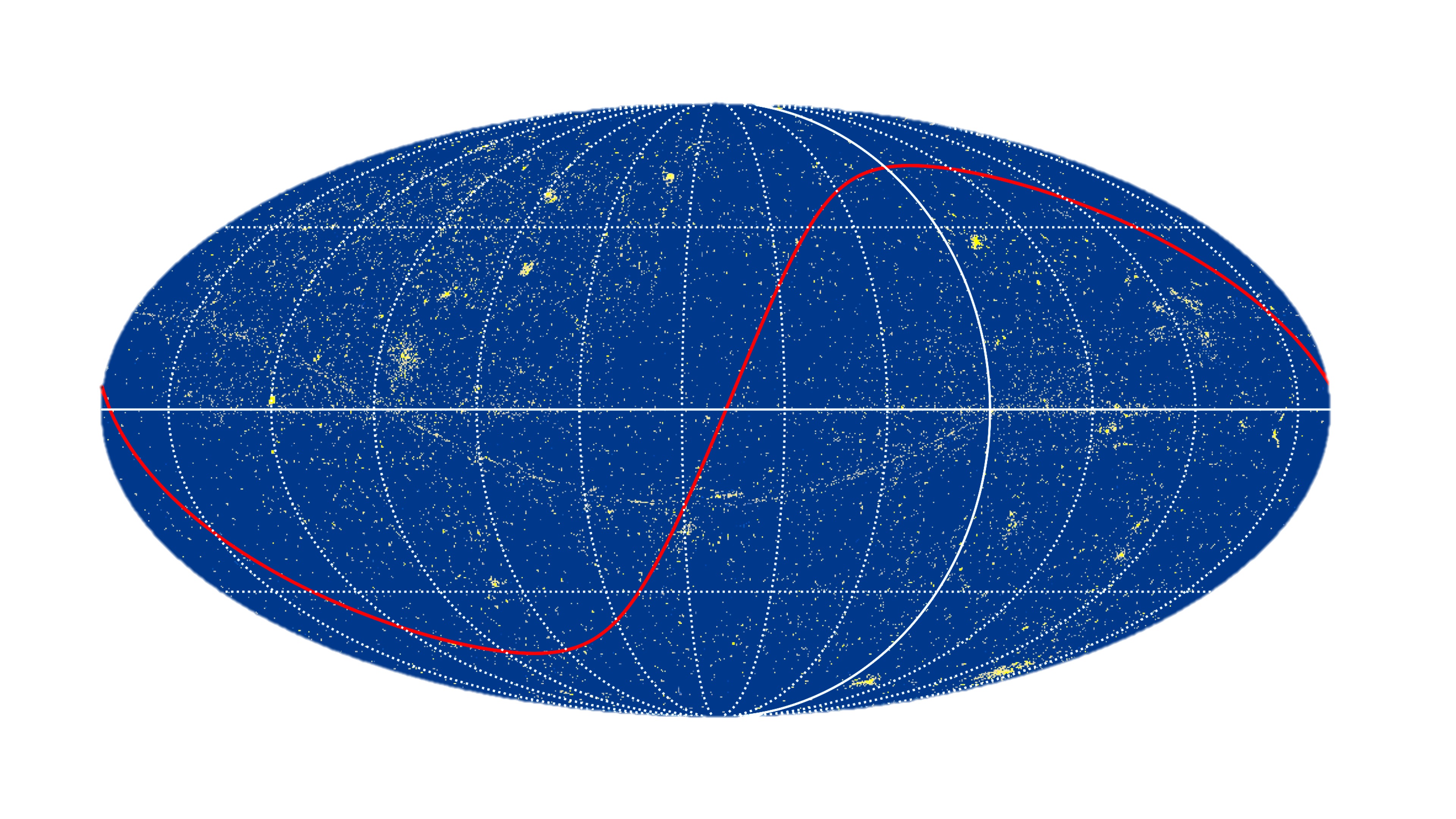
This sky map reveals the relative location and concentration of Hubble observations taken in its decades-long history, represented as yellow specks. The red line indicates the plane of the galaxy from our perspective inside the Milky Way.
NASA
Number of proposals to observe or use archived Hubble data per year | ~1,000 |
Chances of having your proposal selected | ~1 in 5 |
Number of countries that have won proposals for observing time on Hubble | 39 |
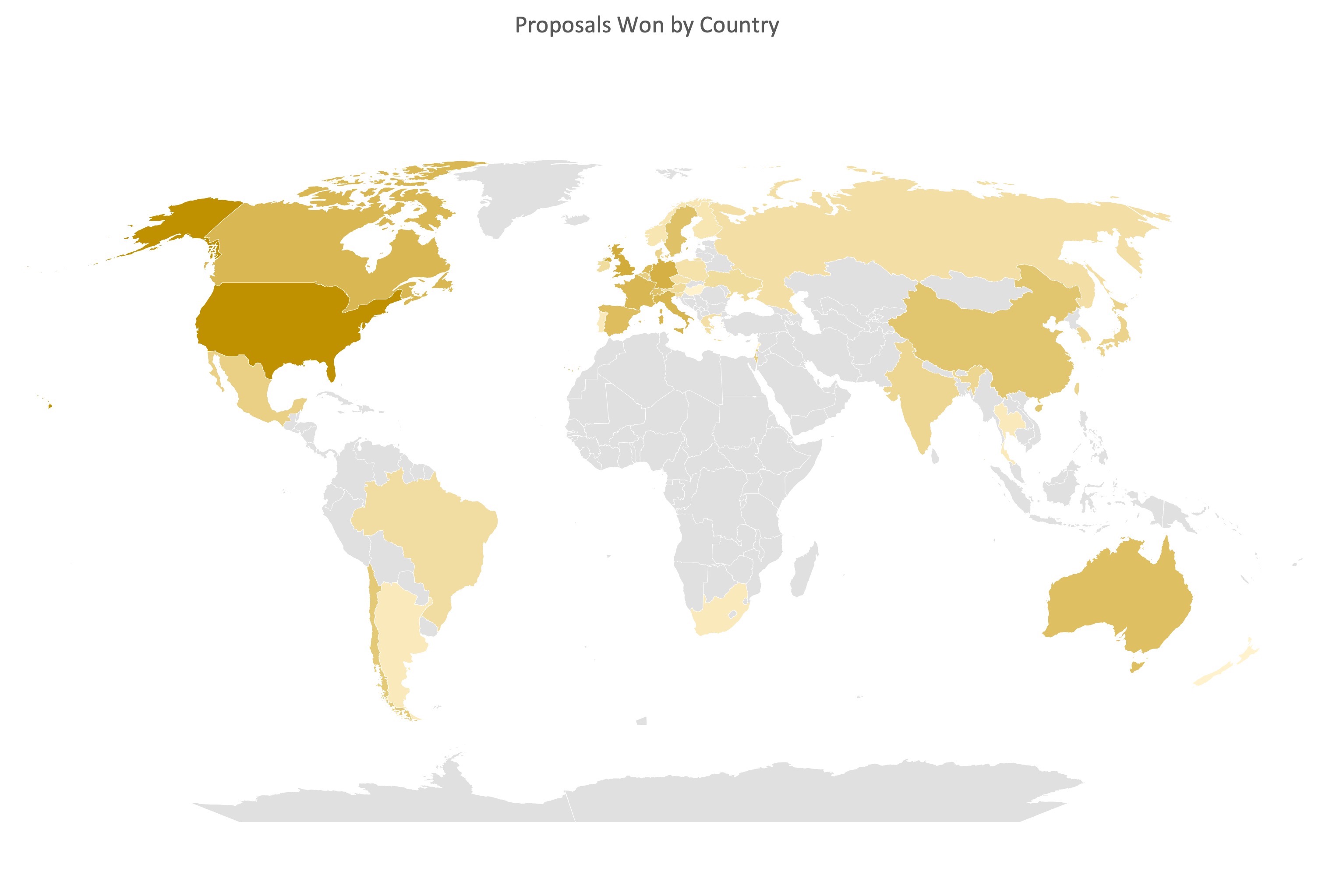
Scientists around the world submit proposals for observing time on Hubble. The map above illustrates Hubble’s world-wide reach. Darker colors indicate a higher number of selected proposals.
NASA
Peer-reviewed science papers published in professional journals on Hubble discoveries | 21,000 |
Citations in published papers (through 2023) | 1,200,000 |
Astronomers that have written science papers based on Hubble data | 25,000 |
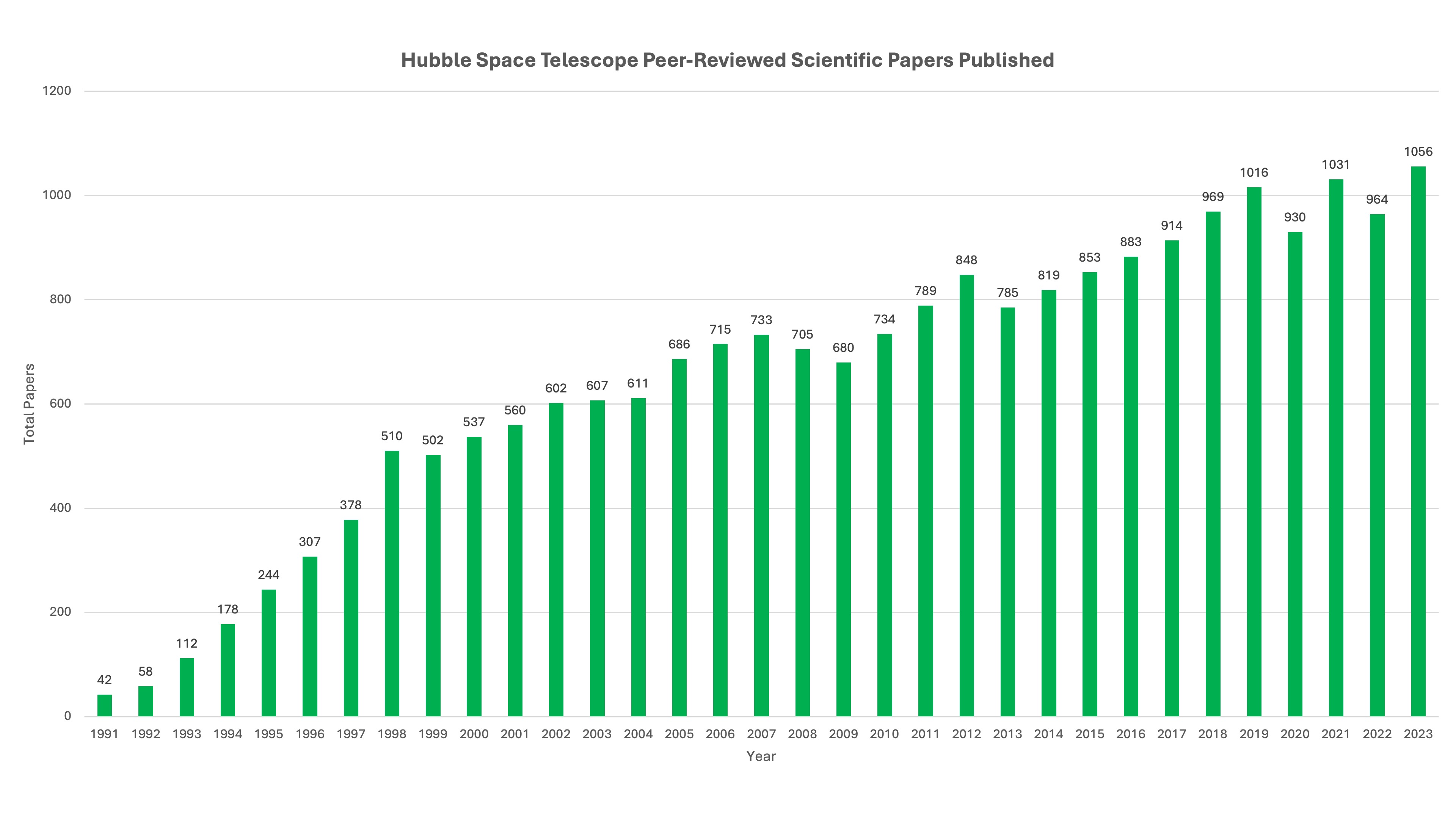
More than 21,000 published academic papers in professional science journals use Hubble data.
NASA
Space shuttle flights to deploy and service Hubble | 6 |
Number of astronauts that flew to Hubble | 32 |
Days that astronauts conducted spacewalks to service Hubble | 23 |
Total time astronauts spent on spacewalks servicing Hubble. | 171 hours and 3 minutes |
Longest Hubble spacewalk | 8 hours and 15 minutes |
Total spacewalkers who serviced Hubble | 17 |
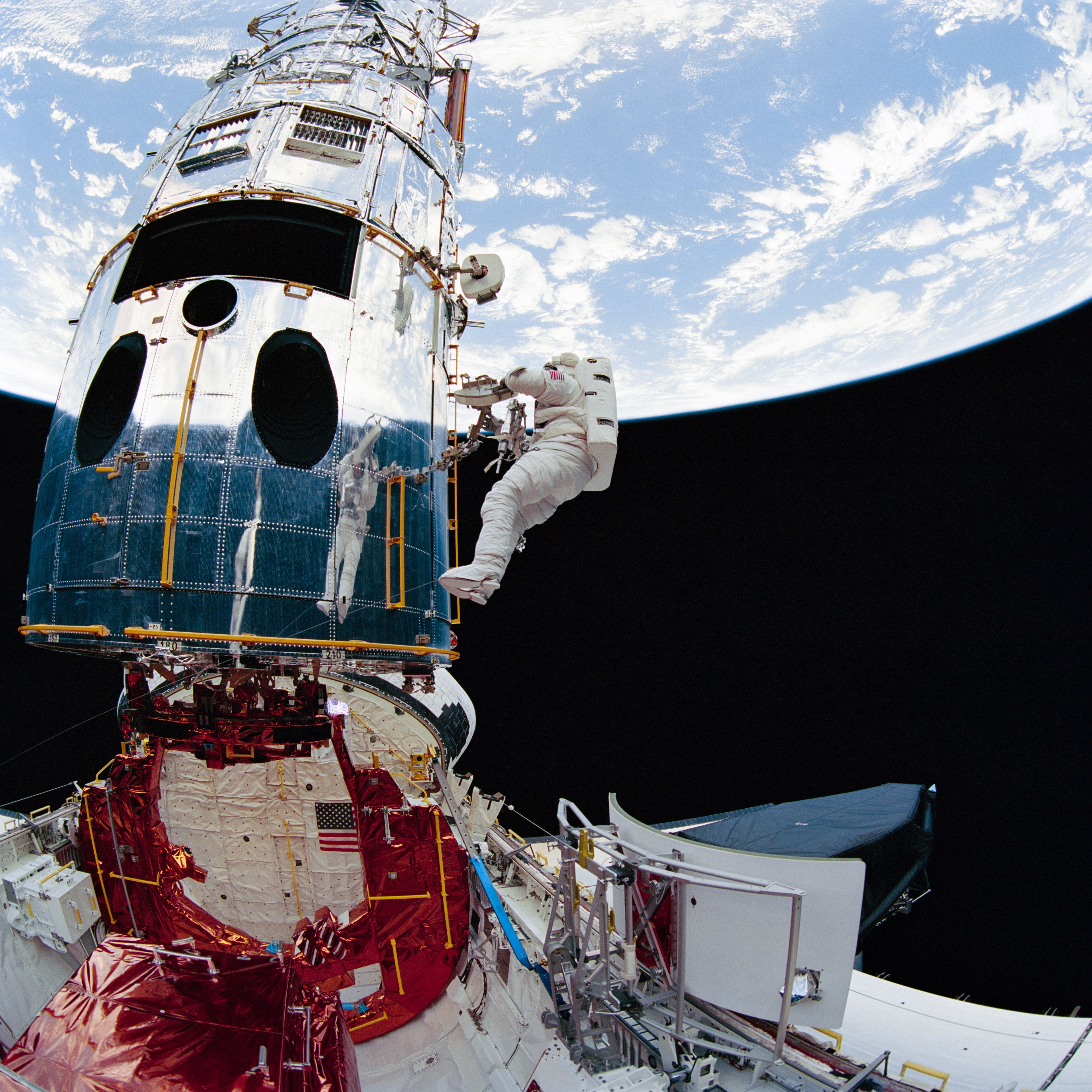
Astronauts serviced Hubble on five separate shuttle missions. In this image, Hubble is mounted in the shuttle's cargo bay during Servicing Mission 1 while astronaut F. Story Musgrave performs maintenance.
NASA

